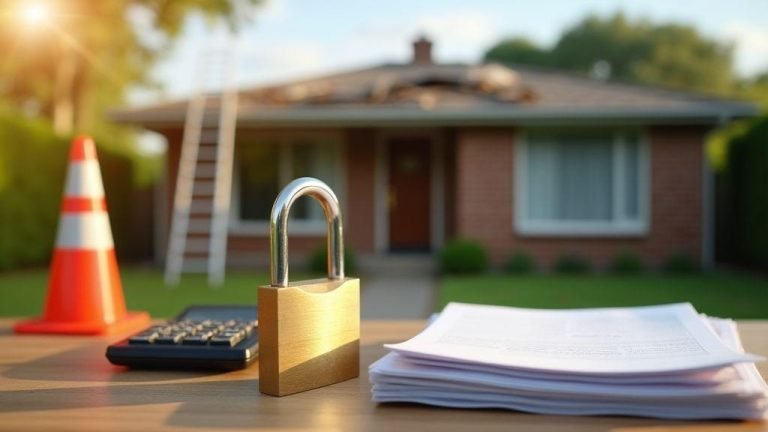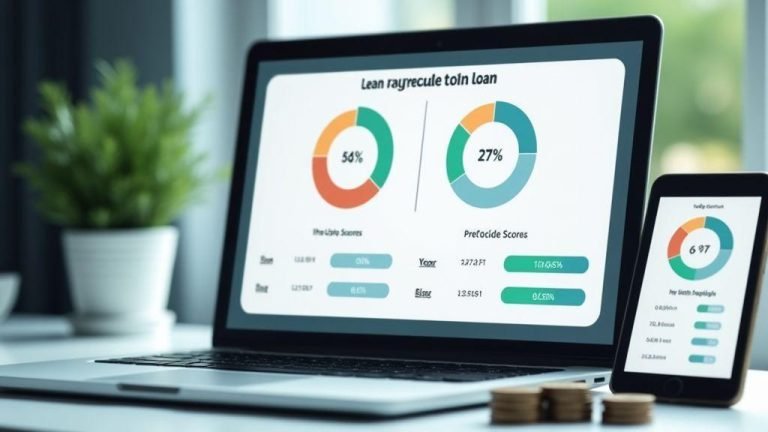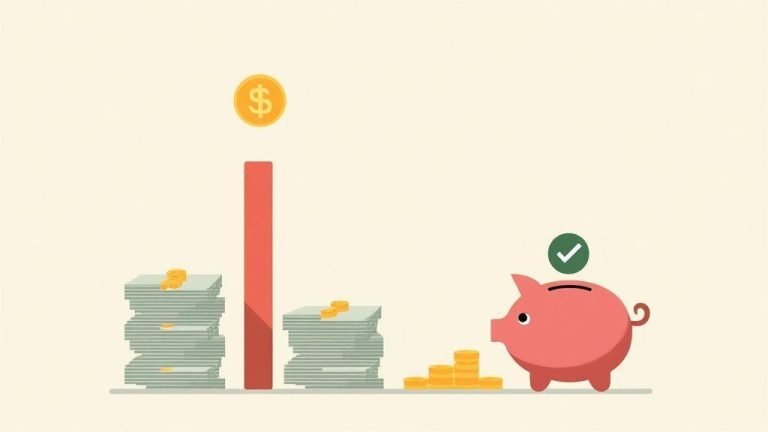Where to look for loans with bad credit in the US and what each lender checks
You can go to many places for a loan when credit is low. Big banks often say no first, but they will lend if you have steady income and proof you pay bills. Credit unions are friendlier. Online lenders move fast and use bank data and pay history instead of only scores. Peer-to-peer sites and secured loans are other paths. Know what each one looks at before you apply.
Lenders mostly want to see that you can pay. They check income, job history, bank balances, ID, and outstanding debts to calculate your debt-to-income ratio. Some pull a credit report; others use alternative signals like regular deposits or rent payments. If you can show steady cash flow, you have a shot even with bad marks.
Make a list of papers and shop with it. Grab a Checklist of documents needed for bad credit personal loan approval including bank statements employment letter and tax returns for verification, plus photo ID and proof of address. Prequalify where possible so you can compare rates without a hard hit to your score. Shop like you are buying a phone plan — read the fine print and ask specific questions.
Banks, credit unions, and online lenders: how they review income and ID
Banks check pay stubs, W-2s, and tax returns for proof of steady work and verify identity with photo ID and your Social Security number. If you’ve had bankruptcy or missed payments, banks may still lend if your income is solid and recent bills are paid. Expect a slower process but clearer rules.
Credit unions ask for similar documents but can be more flexible if you belong to their group. Online lenders often accept uploaded bank statements and use automated ID checks. They may approve faster and offer small loans based on monthly cash flow. That speed helps when you need money quickly, but compare fees closely.
Peer-to-peer, credit unions, and secured options: pros, cons, and fees
Peer-to-peer platforms can match you with investors willing to take more risk, which can mean higher rates or, in some cases, lower rates if your profile matches an investor’s preferences. Expect origination fees and platform charges; read agreements for late penalties or service fees.
Secured loans use collateral like a car or savings account and usually have lower rates. The downside is clear: you risk the item if you miss payments. Credit unions often offer the best mix of low fees and member support. Compare APR, origination fees, and repossession rules before signing.
Lender search checklist: check APR, fees, loan term, and lender reputation
Check the APR, origination fee, late fees, prepayment penalties, and total cost over the loan term. Look up reviews, the Better Business Bureau, and state lending licenses. Ask if they use a soft pull to prequalify you. Verify repayment flexibility and what happens if you miss a payment. These checks help you avoid traps.
Checklist of documents needed for bad credit personal loan approval including bank statements employment letter and tax returns for verification
You need to show proof that you can pay back the loan. Think of documents as your resume for lenders — the right papers cut through bad credit and make you seem reliable.
Start with clear copies of the basics: recent bank statements, a signed employment letter, and tax returns. Add a government ID and proof of address. Lenders will scan these to confirm steady income and account activity. A Checklist of documents needed for bad credit personal loan approval including bank statements employment letter and tax returns for verification should include the items below.
- Photo ID (driver’s license, state ID, passport)
- Proof of address (utility bill, lease, bank statement)
- Recent bank statements (usually 2–6 months)
- Pay stubs (last 2–3) or signed employment letter
- 1–2 years of tax returns (more if self-employed)
- 1099s/platform statements for gig income
- Invoices or client contracts for freelancers
- Asset statements (savings, investments) and proof of benefits if applicable
- Co-signer info or collateral documents (if used)
Get digital copies ready: scan or photograph pages so they are easy to upload. Name files clearly (for example: “BankStmt_May2025.pdf”) and keep originals handy in case a lender asks for hard copies.
Required documents for bad credit loan approval: bank statements, employment letter, tax returns, ID and address proof
Bank statements show cash flow. Lenders commonly want 2–6 months of statements and sometimes 12. They look for steady deposits, not wild swings. If you have direct deposits, highlight them.
An employment letter should state your start date, job title, pay rate, and whether the job is full or part time. Freelancers can use signed client contracts or consistent invoices. Tax returns give a longer view — bring 1–2 years of returns to prove income history.
A valid photo ID is a must. For address proof, use a recent utility bill, lease, or bank statement with your current address. Make sure names and addresses match across documents.
Proof of income documents and alternative income proof for bad credit applicants like gig income or benefits
Pay stubs and W-2s are the easiest proof of income. Lenders accept recent pay stubs (usually the last 2–3). If you file taxes, bring your last two years of tax returns and any 1099s you receive for contract work.
If you earn gig income or receive benefits, you still have options. Use bank deposits that show steady inflow, 1099s, platform statements (Uber, DoorDash), invoices, or an award letter for benefits such as SSI. Add a short cover note explaining any irregular income so a reviewer sees the full picture.
Supporting documents checklist personal loan: recent statements, pay stubs, signed employment letter, 2 years tax returns
Gather recent bank statements, the last two pay stubs, a signed employment letter or contractor agreements, and two years of tax returns. Keep copies in PDF and one set of originals. Label and organize them so you can upload quickly and answer follow-up questions without stress.
How to improve your chances and avoid traps when applying with bad credit
You can improve your odds with a few clear moves. First, pull your credit report and fix any mistakes. Errors like old late payments or the wrong balance pop up more often than you think. A quick dispute can raise your score and make lenders look at you differently.
Next, shop smart and get prequalified. Soft checks show you likely terms without hurting your score. Compare offers from credit unions, online lenders, and community banks. Each will view your file differently, so one “no” is not the end of the road.
Finally, read the fine print. Look past the headline APR and watch for fees and odd repayment rules. If something smells off—pressure to pay up-front or promises that seem too good—step back and check.
Steps to boost approval odds: lower debt, add a co-signer, offer collateral, or get a prequalification
Lower your debt and improve your debt-to-income ratio to help fast. Pay down credit cards, even small amounts. A co-signer with good credit backs your loan, and collateral reduces lender risk and often lowers your rate. Prequalification gives a clearer picture of likely terms so you don’t waste time or hurt your score.
Precautions to avoid: steer clear of advance-fee scams, very high APRs, and unclear prepayment terms
Scammers will ask for money before you get the loan. Real lenders don’t require big upfront fees to approve you. If someone asks for cash to “guarantee” approval, walk away. Check licenses and reviews via the CFPB, state regulators, or NMLS.
Watch APRs and fine print. An APR that’s much higher than other offers is a red flag. Also check for prepayment penalties or balloon payments that hide added costs. Ask for the total you will pay over the life of the loan; if the answer is vague, don’t sign.
How to prepare documents for bad credit loan: organize originals and digital copies, redact sensitive data, and bring notarized copies if asked
Gather ID, recent pay stubs, bank statements, tax returns, and an employment letter. Keep originals and make clean digital copies you can send fast. Use a clear file-name system and password-protect sensitive files. Bring notarized copies if the lender requests them. Keep a Checklist of documents needed for bad credit personal loan approval including bank statements employment letter and tax returns for verification so you don’t miss anything.
Frequently asked questions
- What is the Checklist of documents needed for bad credit personal loan approval including bank statements employment letter and tax returns for verification?
- You need ID, bank statements, an employment letter, and tax returns. Add proof of address and recent pay slips. Gather these now to boost your approval odds.
- How many months of bank statements should you show for bad credit personal loans?
- Lenders usually want 3–6 months; some ask for 12. More months show steady cash flow. Send clear PDF copies.
- What must your employment letter say for verification if you have bad credit?
- It should show your job title, start date, salary or hourly rate, and employer contact, be on letterhead, and be signed.
- Will you need tax returns for a bad credit personal loan?
- Yes. Lenders often ask for 1–2 years of returns. Self-employed people may need more. Tax returns prove real income and build trust.
- What extra documents can improve your bad credit personal loan approval chances?
- Add proof of address, recent pay slips, asset statements, platform statements (for gig work), and a short credit explanation letter. A co-signer helps too. Clean scans speed the process.
- Any quick tips for using the Checklist of documents needed for bad credit personal loan approval including bank statements employment letter and tax returns for verification?
- Prepare PDFs with clear names, keep originals handy, and prequalify with lenders using soft pulls. Organizing documents before you apply shortens approval time and improves your chances.



